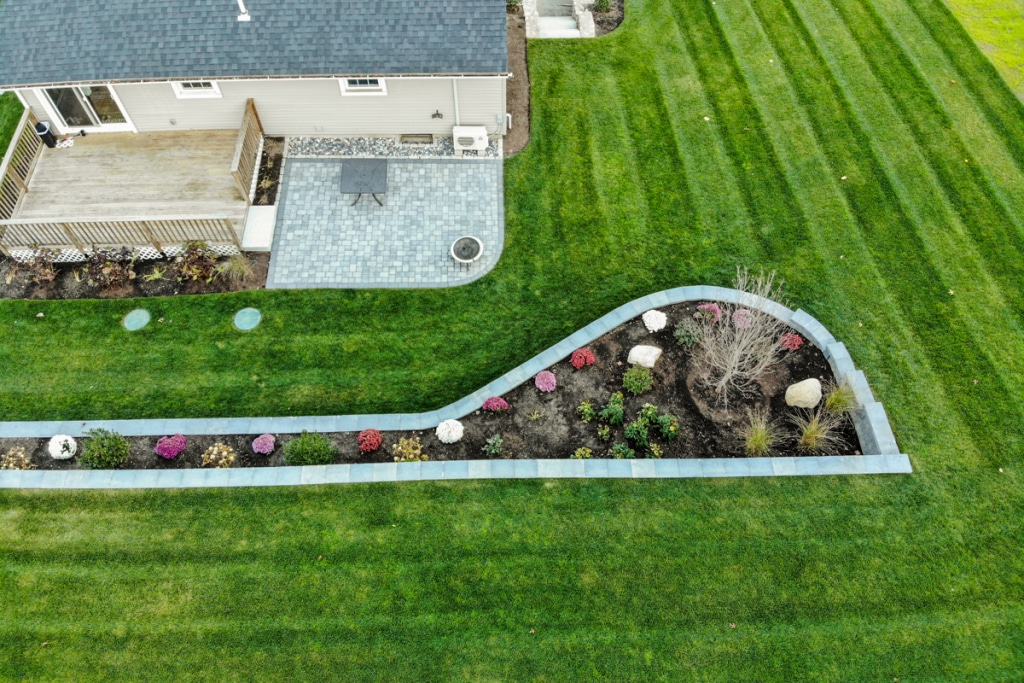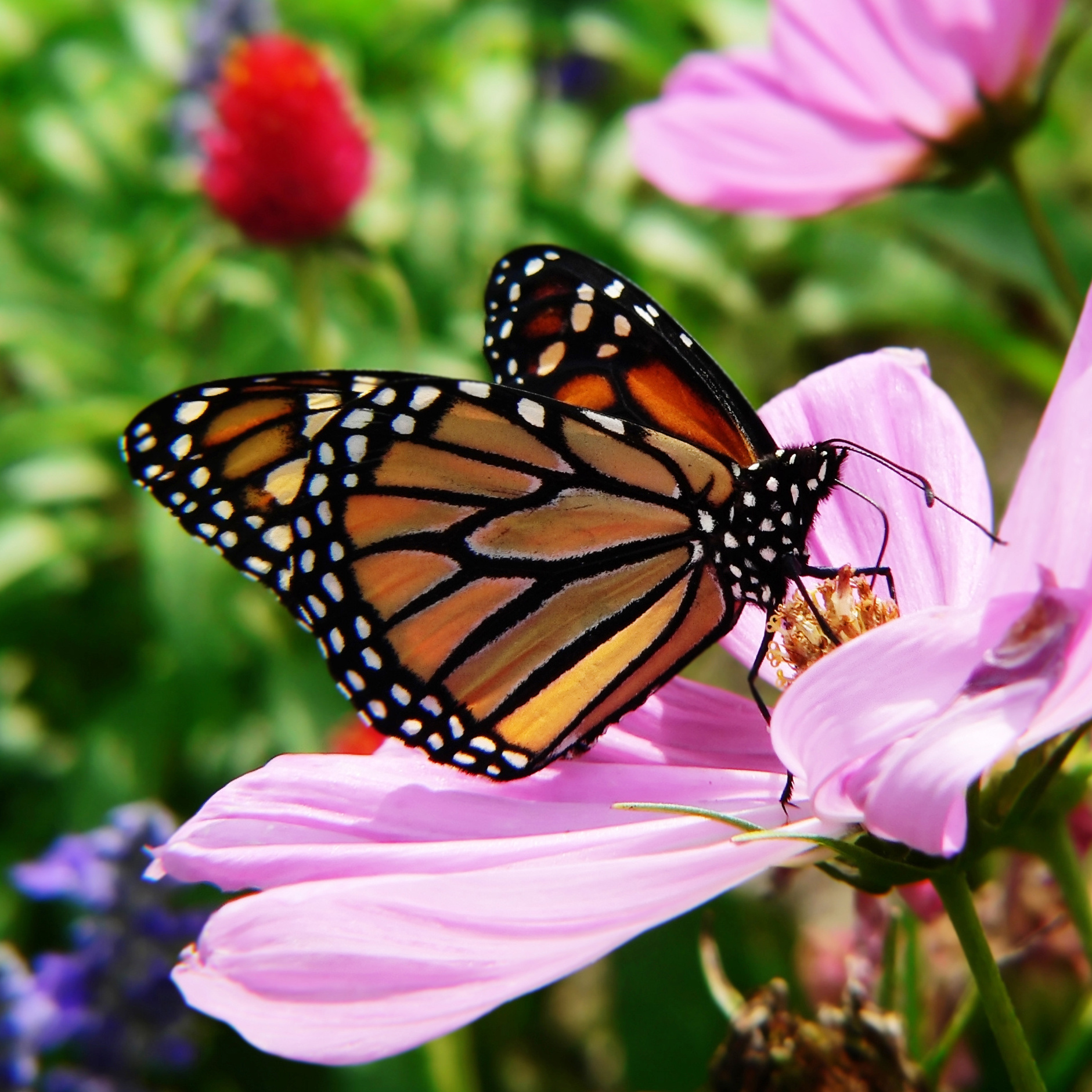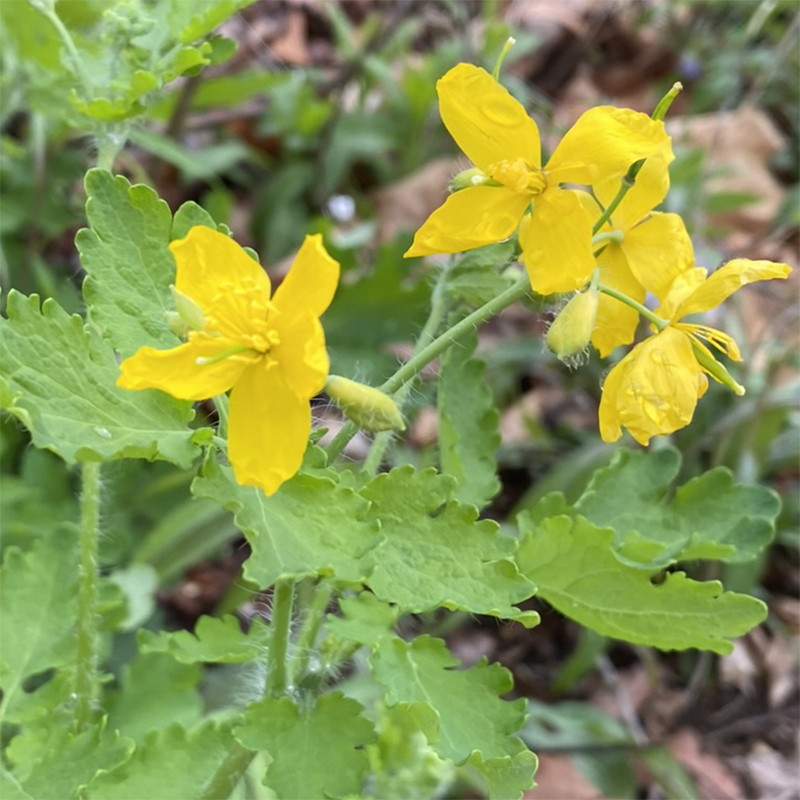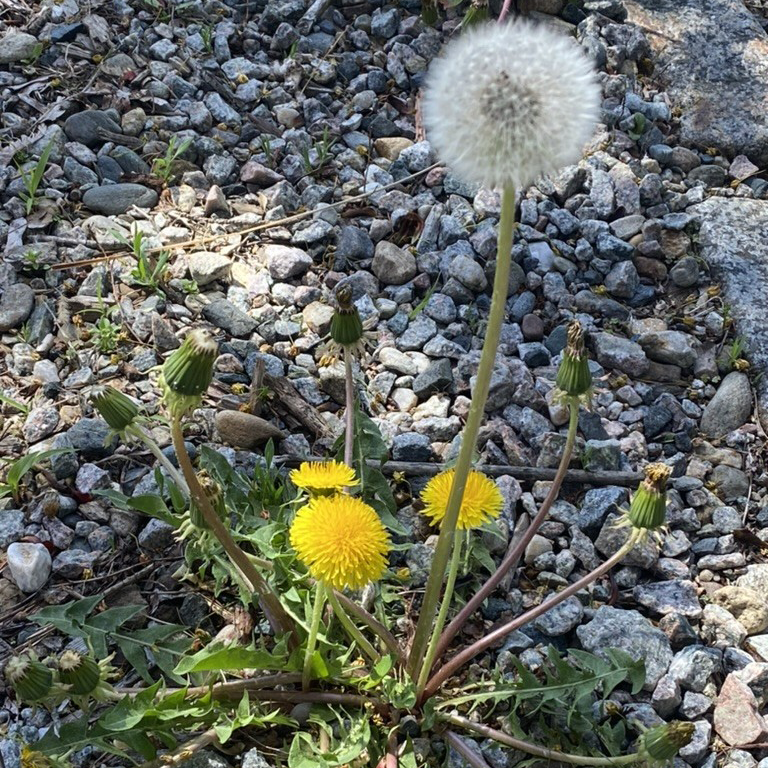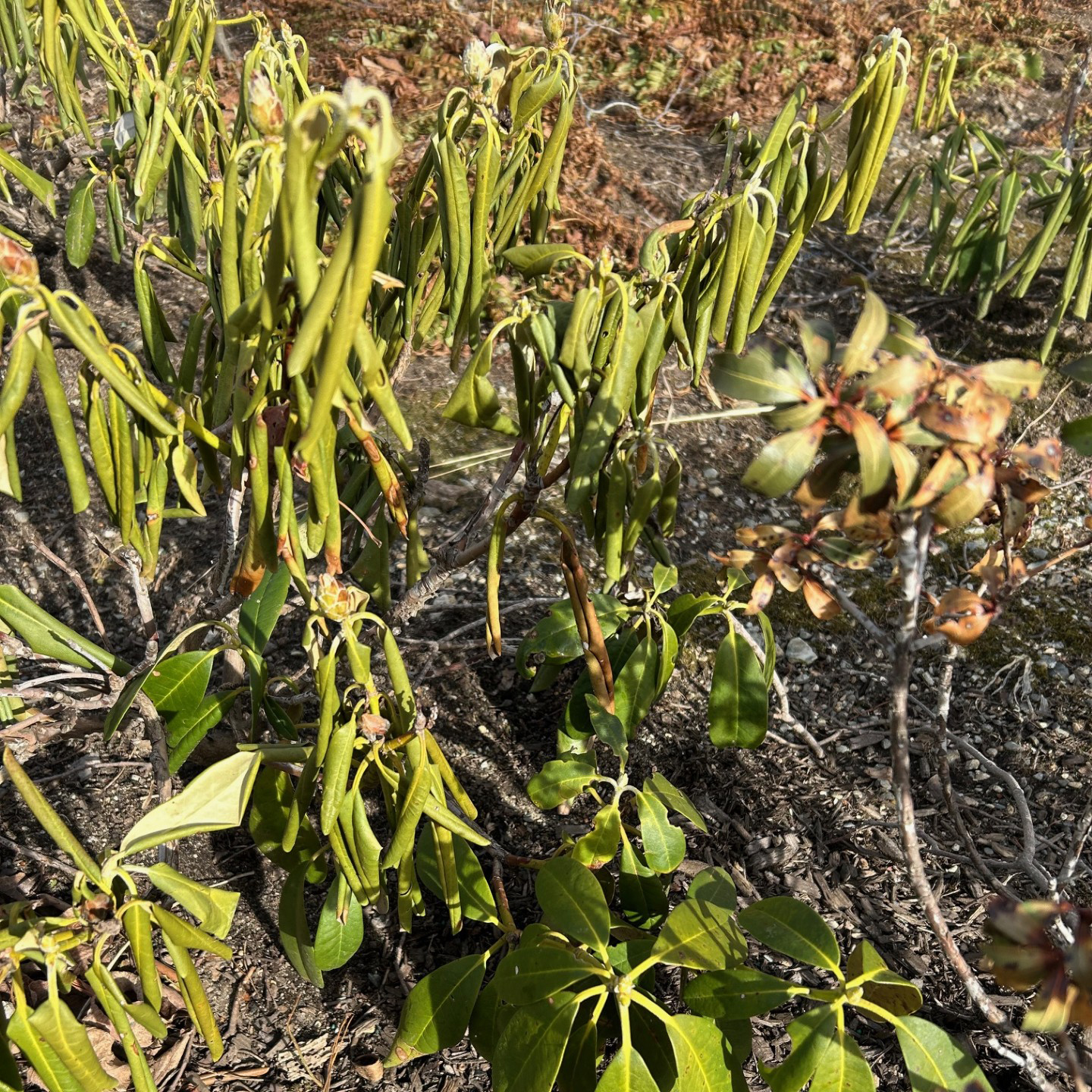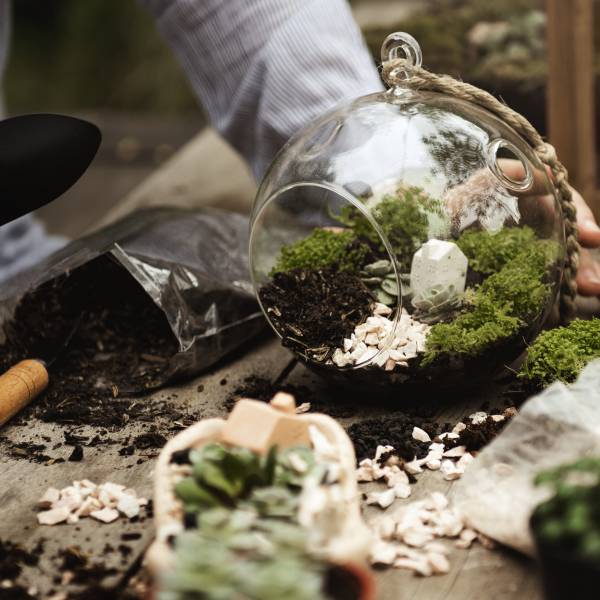
Light
A small terrarium cannot take direct sunlight because too much heat builds up inside and the plants will start to cook! Terrariums love bright INDIRECT sunlight, a place near a bright window but not in beams of the sun. A north-facing window is great. Aim for 4 to 6 hours of indirect sunshine a day.
Do not move your plants around to follow the sun or to avoid it. Plants are oriented to the light and do not thrive if they have to repeatedly orient themselves. Turn the terrarium gradually over a period of time, if the plants are all growing to one side, or else tip the terrarium, to provide the plants with more, even light.
Watering
The key to a successful terrarium is condensation. Inside the glass, the water cycle is happening and if water levels are correct, condensation should form on one side of the terrarium about once a day. If no condensation forms on the inside of the terrarium, add a couple of tablespoons of water a day until it does. Check to see that plants are getting enough light. (Inadequate light will prevent the cycle from starting.) If condensation forms on more than 1/3 of the glass, wipe it off with a paper towel and seal the top again. Do not leave it open to dry. Plants that like high humidity will suffer if you leave it open. If excess condensation continues, repeat daily until only 1/3 condenses. When it is right, put the cover on and leave it in good light. Give it a spray of water or a few tablespoons every few months, or when condensation stops. It is always best to err on the side of less water; it is more difficult to remove water from a terrarium than it is to add to it.
Plant Care
Remove dying leaves as soon as you notice them. They will likely rot and attract fungus. You will help some plants branch out by pinching off growing tips, creating bushier, more attractive plants. Pinching also helps control the height so plants don’t outgrow their containers.

